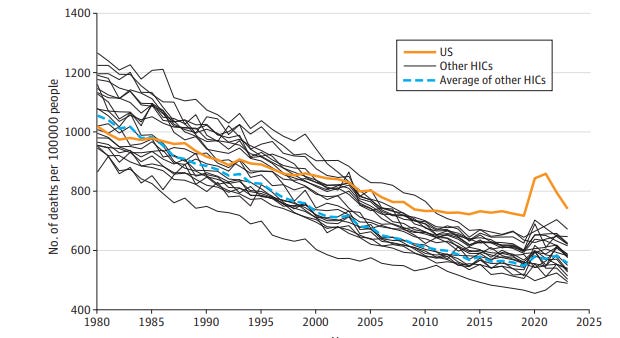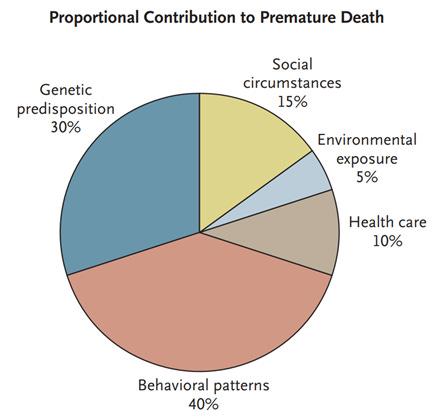Death rates declined less in the U.S. than other developed countries
June 5, 2025
Mortality rates in the U.S. and other high income countries. 1980-2023
Source: Bor, et al JAMA Health Forum, May 23, 2025
Researchers compared mortality rates in the U.S. with composite death rates in 21 other high income countries in a standardized database. Their research was published in JAMA Health Forum last Friday. In 1980, the U.S. was in the middle of the pack, but mortality rates have declined much more in other high income countries compared to the US. The U.S. has higher rates of premature death from drug overdose, firearm injury and cardiometabolic disease.
Mortality spiked up in 2020-2021 due to the COVID-19 pandemic, when the U.S. had more than 1.1 million excess deaths compared to what would be expected based on other high income countries. In 2023, the U.S. had over 700,000 excess deaths. This represented 23% of all deaths and 46% of deaths in those under age 65.
Only a small portion of premature mortality is due to medical care . Below is an estimation of causes of premature mortality published in 2007, which estimated that behavior, social circumstances, and the environment represented 60% of all preventable premature mortality. I suspect that some of what was then characterized as “behavioral,” like obesity, might now be categorized as amenable to health care. Smoking rates, a major behavioral cause of premature death, have declined in the U.S. and other high income countries. Still, decreasing premature mortality in the U.S. will require addressing more than medical care.
Source: Schroeder, NEJM 2007
Implications for employers:
● Lower life expectancy, especially premature death in those under age 65, is terrible for people who lose years of life, and also decreases U.S. economic competitiveness.
● Employers play an important role in social circumstances, and can support employee financial, social, and emotional wellbeing through paying a living wage and offering meaningful benefits in addition to health insurance, including sick leave, student loan assistance, and mental health benefits .
● Employers can continue their efforts to make it easier for employers to adopt healthier lifestyles, for example, by covering the cost of tobacco cessation programs or reimbursing fitness center memberships.


